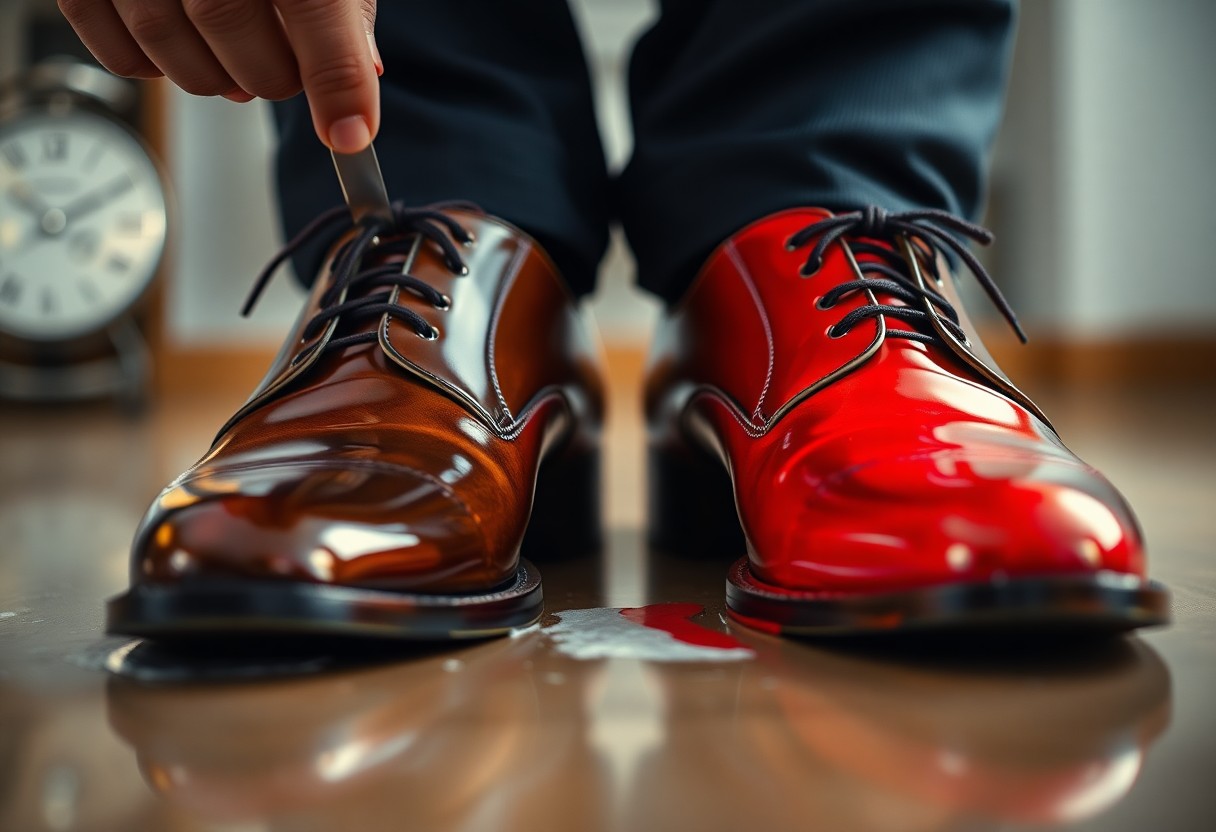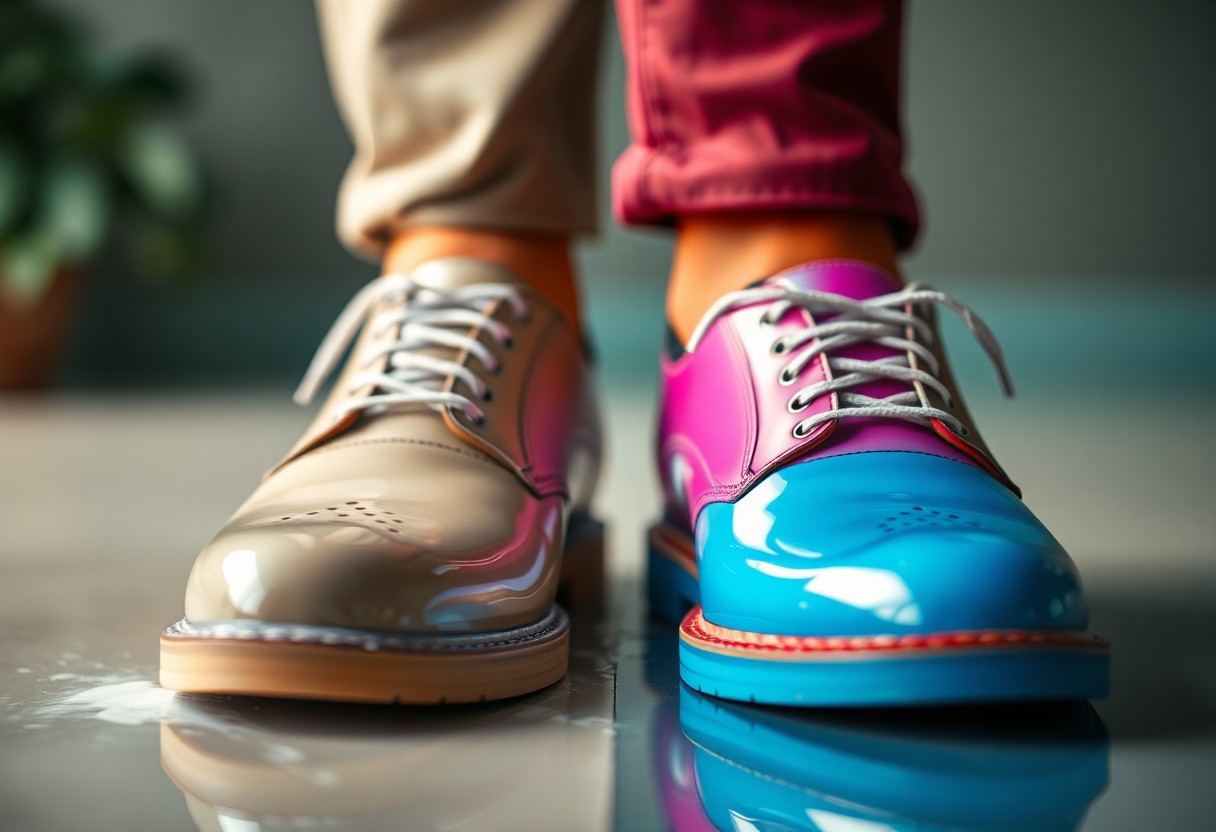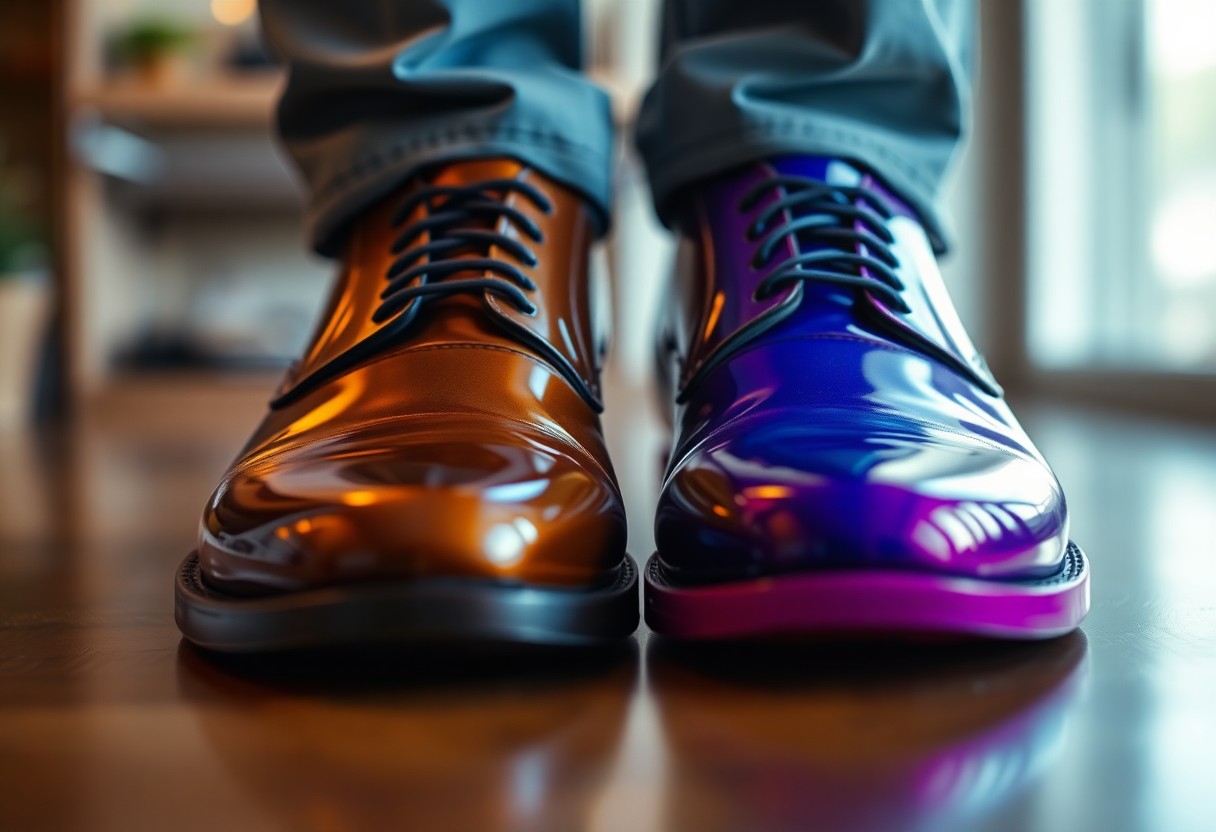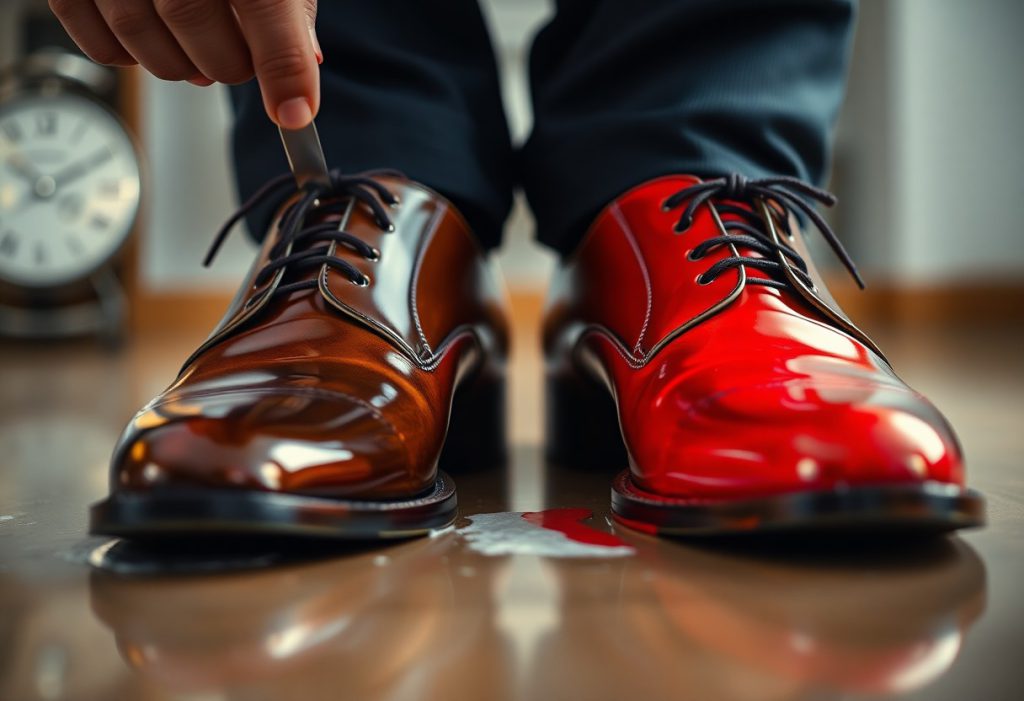If you’re currently relying on neutral wax polish for your shoe care, it’s essential to reassess your strategy. Many shoe owners mistakenly believe that neutral wax serves as an all-encompassing solution for every leather color. Unfortunately, this widespread misunderstanding can lead to significant damage to your valuable footwear. Neutral wax does not contain protective pigments, which can cause color stripping from the leather, especially on new shoes. Furthermore, you might face the frustrating issue of white residue accumulating in the creases of your leather. Instead, it’s advisable to utilize colored wax polishes specifically formulated to match your shoe’s color—like light tan wax for green leather or navy wax for grey—to achieve optimal results.
Uncovering the Myths About Neutral Wax in Shoe Care
Many individuals mistakenly view neutral wax as a universally safe option for their shoe maintenance requirements. Unfortunately, this commonly held belief can lead to severe damage to leather footwear. Studies reveal that around 70% of premature leather deterioration stems from improper polish application, with neutral wax often being the primary culprit. This underscores the necessity for shoe owners to educate themselves about their polish options to avoid expensive mistakes and ensure their footwear remains in excellent condition.
Setting the Record Straight on Misconceptions About Neutral Wax
Neutral wax is often regarded as a one-size-fits-all solution for every shoe color, but this assumption can be harmful to your shoes. While it may seem like the safest option when you lack an exact color match, the absence of pigments in neutral wax can strip away the color from leather, particularly with new pairs. Therefore, it’s crucial to use products specifically formulated for your shoe’s color to maintain their integrity and aesthetic appeal.
Clarifying the Appropriate Use of Neutral Wax
It’s vital to dispel the misconceptions surrounding the versatility of neutral wax. This product should only be employed as an accent polish, rather than serving as your primary shoe care solution. Its application should be reserved for final touches after you have applied colored wax. By understanding this, you can avoid the white residue buildup commonly linked to neutral wax. Instead, consider using complementary colored waxes—such as light tan on green leather or navy on grey shoes—for the best care and protection.
Identifying the Hazards Linked to Neutral Wax
While neutral wax may seem harmless, it presents serious risks to your leather shoes. The lack of pigments in neutral wax makes it potentially damaging for leather care. It can compromise your shoes’ finish, strip away their color, and leave behind hard-to-remove residue when used as your main polishing product. Recognizing these risks is crucial for ensuring the longevity of your footwear and maintaining its visual appeal.
The Dangers of Color Stripping from Neutral Wax on Leather
Applying neutral wax to new shoes carries the risk of removing the original leather finish. This danger is especially pronounced for shoes that have undergone post-drum-dye processes or feature crust leather. Professional insights suggest that 80% of damage to new shoes is caused by improper application of neutral wax during their initial polishing. This statistic highlights the importance of selecting the right products from the outset to protect your investment and keep your shoes looking their best.
Understanding the White Residue Problem
Statistics indicate that approximately 70% of users who apply neutral wax experience persistent white residue issues in the creases of their shoes. This residue tends to become sticky over time, resulting in an unattractive appearance, especially after walking or when the leather flexes. Not only is this residue unsightly, but it also indicates the need for extensive cleaning to restore your shoes’ original look.
Addressing white residue may require aggressive cleaning methods that could inadvertently harm your shoes. To eliminate the residue, you might need to use potent solvents or engage in vigorous brushing, both of which can damage the leather’s surface and compromise its long-term durability. Preventing these complications begins with proper wax application from the very start.
Understanding the Effects of Neutral Wax on Different Leather Types
Different types of leather react differently to neutral wax application, resulting in varying degrees of damage to your footwear. The consequences can range from color stripping to residue accumulation across various leather types. Recognizing these differences is essential for making informed decisions in your shoe care routine, ultimately ensuring the longevity and quality of your footwear.
| Leather Type | Effect of Neutral Wax |
|---|---|
| Crust Leather | Severe color stripping |
| Box Calf | White residue accumulation |
| Museum Calf | Pattern damage |
| Patent Leather | Surface dulling |
| Suede | Texture damage |
The Damaging Effects of Neutral Wax on Crust Leather
When applied to crust leather, neutral wax can lead to immediate color loss. The surface treatment of the leather is easily compromised, exposing unwanted patches and ultimately ruining the leather’s finish. It’s essential to use color-specific products to avoid these detrimental effects and maintain the aesthetic appeal of your shoes.
Consequences of Using Neutral Wax on Box Calf Leather
As one of the most frequently used leathers, box calf shoes are especially susceptible to developing sticky white residue in their creases when treated with neutral wax. Given the characteristics of box calf leather, repeated applications of neutral wax can lead to buildup issues that become challenging to remove without harsh solvents, which can further damage the leather if not handled carefully.
Risks Involved with Museum Calf Leather
Among premium leather varieties, museum calf shoes are at risk of losing their distinctive marbled pattern when exposed to neutral wax. This type of leather requires special care, as its unique surface treatment can be compromised by aggressive products. Protecting the characteristic mottled appearance of your shoes is essential, and using appropriate colored waxes instead of neutral options is the best approach.

Discovering Superior Alternatives to Neutral Wax for Effective Shoe Care
Now is the time to explore safer and more effective alternatives to neutral wax for your shoe care routine. These options will protect your shoes’ color while providing a superior shine without the risks of color stripping or white residue accumulation. Transitioning to these alternatives can greatly enhance the overall appearance and longevity of your footwear, allowing you to maintain them in pristine condition.
The Advantages of Using Cream Polishes
Among the various shoe care products available, cream polishes emerge as your best choice for preserving color. These products are specifically designed to revitalize the leather’s color and restore moisture to your shoes. It’s vital to select a shade that closely matches your shoes or consider mixing colors to achieve the perfect match for optimal results and enhanced care.
The Benefits of Colored Waxes for Shoe Maintenance
Waxes infused with color pigments provide a superior shine without the issues of white residue frequently found with neutral wax. By utilizing complementary colors for hard-to-match shoes, like applying light tan wax on green leather or navy wax on grey shoes, you gain better control over the final appearance of your footwear. The pigments in these waxes not only facilitate a deeper, longer-lasting shine but also help maintain the leather’s color integrity. For example, using black wax can subtly deepen any color, providing a more refined look to your shoes.
Your Essential Color Matching Guide for Effective Shoe Care
Many shoe care mistakes occur due to confusion surrounding color matching. Your shoes require proper pigmented care rather than a one-size-fits-all neutral wax solution. By understanding the fundamentals of color theory and utilizing complementary colored waxes, you can enhance your shoes’ visual appeal while effectively protecting the leather.
Maximizing Results with Complementary Color Use
Some of the most effective combinations include using light tan wax on green leather and navy wax to enhance grey shoes. Furthermore, black wax can deepen any color when applied carefully. The goal is to create depth while preserving the original hue of your shoes, ensuring they maintain a polished and attractive appearance.
Strategic Color Pairings to Elevate Your Shoe Care Game
Enhance your shoe care routine by pairing darker shades with lighter tones. For instance, applying burgundy wax to brown shoes can enrich their overall appearance, or using dark brown wax on cognac leather can add depth and character. The key to effective polish application is to proceed gently and gradually for the best results.
Recognizing that wax polish typically contains less pigment than cream polish will assist you in achieving optimal results. A minimal amount of wax is required to achieve the desired shine, as excess application can lead to color buildup that detrimentally affects your shoes’ appearance. Always test new color combinations on a small, inconspicuous area first to ensure compatibility and avoid any mishaps.

Expert Techniques for Achieving a Professional Shoe Shine
Your success in attaining a polished shoe look hinges on employing proper techniques and color-matched waxes instead of neutral options. Here are essential steps to follow for achieving the best results:
- Begin by thoroughly cleaning your shoes before applying polish.
- Start with cream polish to nourish and condition the leather.
- Apply colored wax sparingly to achieve optimal shine.
- Buff with a horsehair brush between layers for a smooth and even finish.
Understanding the appropriate tools and products is essential for achieving professional-quality results in your shoe care routine.
Maintaining Precision in Product Application
Behind every successful shoe shine is precise product measurement. The amount you apply should be minimal—approximately a pea-sized portion for each section of the shoe. Overapplication of wax can lead to buildup and unwanted white residue forming in creases, which detracts from the overall look of your footwear.
Applying Techniques for Maximum Effectiveness
For the best results, apply wax in small circular motions using a soft cotton cloth. It’s advisable to work in thin layers and allow each layer to dry completely before applying the next. This technique minimizes product accumulation while ensuring uniform coverage across the shoe's surface.
Adopting professional techniques involves using gentle pressure during application and allowing for proper drying time between layers. Pay particular attention to areas such as the toe cap and heel, where shine is most noticeable. This layered approach results in a deep, enduring shine while avoiding the pitfalls associated with neutral wax.
Making Informed Decisions for Your Shoe Care
By steering clear of neutral wax and opting for color-specific alternatives, you can significantly enhance the protection and appearance of your shoes. Utilizing cream polishes for color maintenance and matching wax polishes for shine is vital. Choose complementary colors for challenging shades, such as light tan wax on green leather or navy wax on grey shoes. This approach will help you sidestep white residue issues and prevent color stripping. By implementing the right products in appropriate amounts, you will extend the lifespan of your shoes while preserving their pristine appearance.

Your Shoe Care Questions and Answers
How does neutral wax harm new shoes?
Neutral wax functions as a stripping agent on new shoes, especially those with surface-applied colors. Lacking pigments, the wax can remove the leather’s protective finish, leading to color damage on new shoes crafted from crust leathers or those with unique finishes. Instead, opt for colored wax that aligns with your shoes for better protection and care.
What problems can arise from using neutral wax during wear?
Neutral wax frequently leads to the formation of white residue in leather creases, which becomes sticky and challenging to remove. This residue typically emerges after wearing the shoes and necessitates rigorous brushing or chemical solvents for elimination. The cleaning process can inadvertently harm the leather and create unnecessary work, which could be avoided by opting for colored wax.
What are the best alternatives to neutral wax for shoe maintenance?
For effective shoe care, utilize cream polishes for color maintenance and apply matching colored waxes for shine. When dealing with hard-to-match colors, consider using complementary colored waxes, such as light tan wax for green shoes or navy wax for grey shoes. Applying small amounts of colored wax will safeguard the leather while enhancing its appearance, delivering superior outcomes compared to neutral wax.
The Article Why you should avoid using neutral wax on shoes and better alternatives appeared first on My Shoes Finder
The Article Avoid Neutral Wax on Shoes: Better Alternatives to Consider Was Found On https://limitsofstrategy.com


